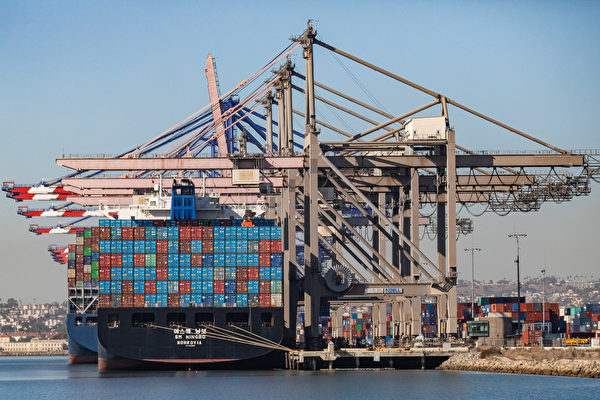The normal operation of ports is an important part of the stability of the US supply chain. In the face of the ongoing US-China trade war, as well as some crises arising from the temporary breakdown of labor negotiations at East Coast ports, Jared Bernstein, Chairman of the Council of Economic Advisers (CEA) in the Biden administration, shared his views on the economic outlook.
The largest dock workers’ union in North America, the International Longshoremen’s Association (ILA), announced on June 10 that negotiations with the United States Maritime Alliance (USMX) had been suspended. The reason was that the union discovered that one of the main members of USMX had begun using automated systems at some ports in an attempt to replace workers.
If the two sides fail to reach a new round of negotiation agreement before the labor contract expires on September 30, many are worried that it could trigger the largest strike by ILA since 1977, leading to supply chain crises and significant increases in transportation costs.
On June 12 (Wednesday), Bernstein admitted during a media briefing held at the Port of Los Angeles, one of the busiest ports in the United States, that if the negotiating parties cannot finalize a new contract before the current labor agreement expires, it could have a potential impact on the US economy. However, the Biden administration currently has no inclination to intervene.
“Our government’s policy encourages collective bargaining because it is effective. President Biden has always supported collective bargaining, but he advocates giving both parties enough space at the current stage of negotiations without hindering each other, and we encourage genuine negotiations from both sides,” he said, adding that the government will closely monitor the progress of the situation.
The public is also concerned about whether this will have a significant impact on West Coast ports. Gene Seroka, Executive Director of the Port of Los Angeles, stated at the meeting, “So far this year, I have traveled to Asia three times and to Europe last month, and importers and exporters have indicated that they have shifted some shipping quotas to Los Angeles as a hedge. Not just because of the negotiations between ILA and USMX, but also due to security issues in the Red Sea and restrictions in the Panama Canal, so currently it is not having a big impact on us, but there is no sign of a significant increase either.”
Seroka also holds a relatively optimistic attitude towards the future trend in the coming months. In May, the Port of Los Angeles handled 752,893 twenty-foot equivalent units (TEUs), slightly down 3% from the previous May, but overall cargo volume for the first five months of this year increased by 18% compared to 2023.
“We have continued the strong and stable throughput trend that began earlier this year,” he said. “As we prepare for the second half of the year, our forecasts indicate that port activity will be even more active during the entire summer.”
Therefore, he believes that the current situation also highlights the continued improvement of the US economy, with consumers continuing to purchase manufactured goods even in difficult times, and maintaining a positive development momentum. The port is also constantly working to avoid congestion, with ships currently arriving at the Port of Los Angeles in less than four days on average.
Bernstein noted that there are indeed some healthy indicators in the economy at the moment, but it is far from out of trouble. “The reason mainstream working families are faring well economically is because the job market has been very strong, but prices remain high,” he explained the current direction of the government, “What we are trying to do is maintain the strong momentum in the job market while exerting downward pressure on prices.”
Bernstein is responsible for providing economic advice to the Biden administration and assisting in formulating domestic and foreign policies.
On May 14, the Biden administration announced an increase in tariffs on many imported goods from China, including electric vehicles, computer chips, medical products, and crane equipment.
When asked whether shippers would rush to ship goods out of China before the tariff policy is implemented, Seroka believes, “We have seen manufacturing and procurement shift to Southeast Asia and South Asia; Mexico has now become the number one trading partner with the United States.”
“We may see some goods arrive at ports, but it will not be a sudden surge in quantity, nor a significant drop afterwards,” he believes that the current policy of levying tariffs on certain Chinese goods will not have a major impact on the current trajectory of port development.
Bernstein added that the current trade volume at ports remains quite strong. “If trade from China decreases but trade volume remains at the same level, it means that trade between the United States and other countries is increasing,” he believes that the recent policy of taxing Chinese goods is also causing a redistribution of supply chains.

